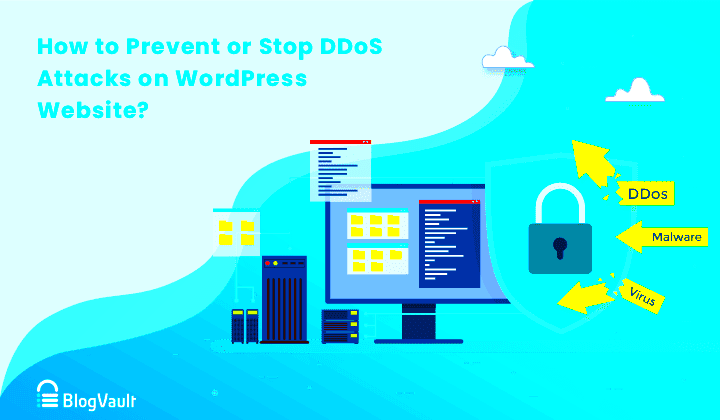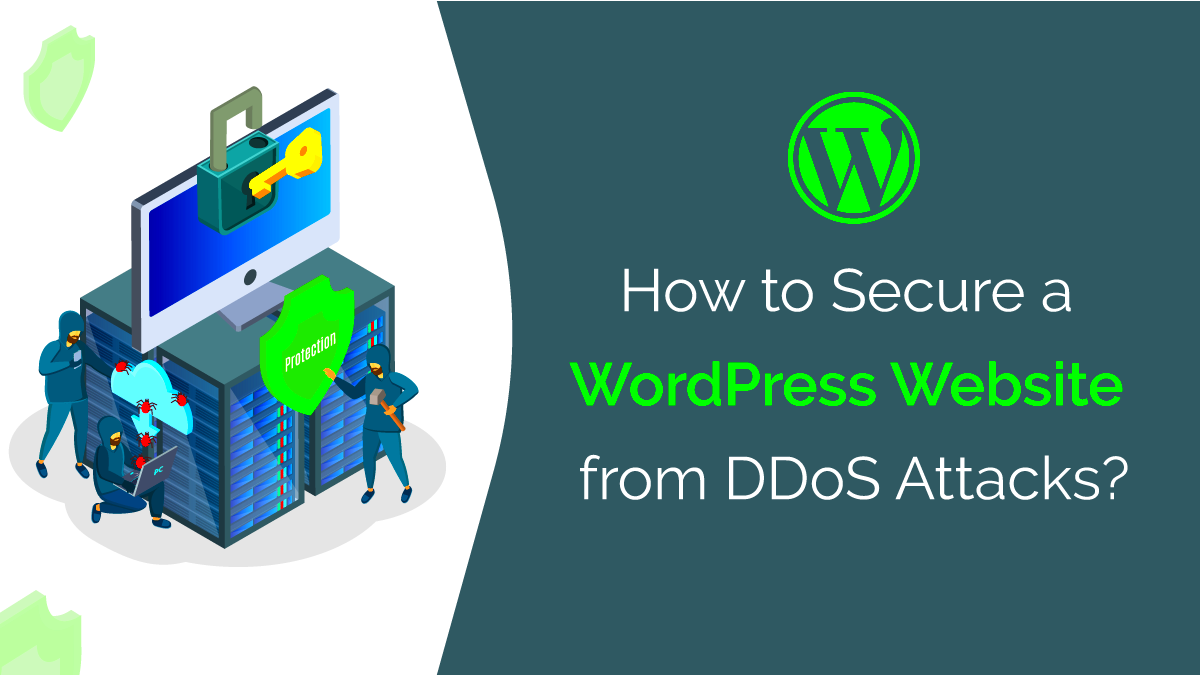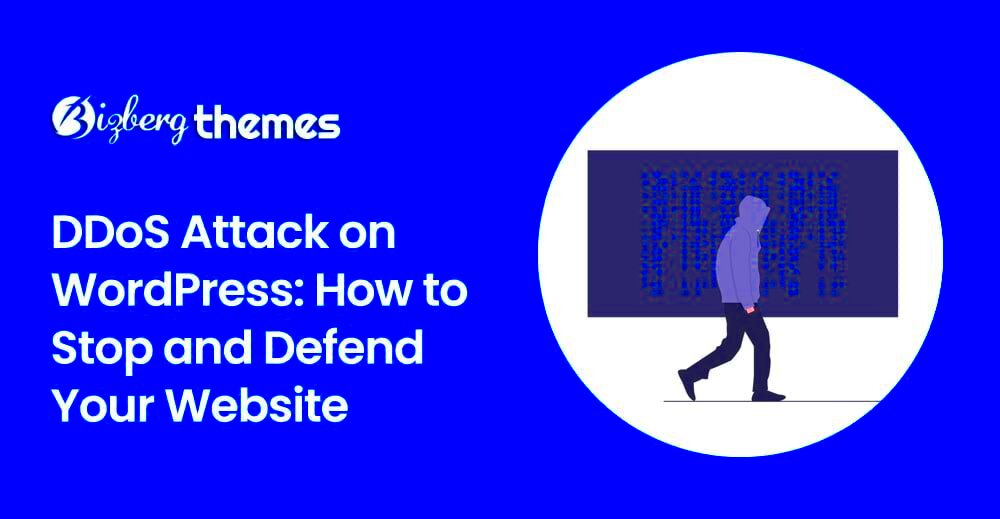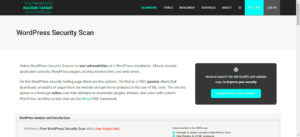In today’s interconnected world, DDoS (Distributed Denial of Service) attacks are a growing concern for website owners, especially those running platforms like WordPress. A DDoS attack aims to overwhelm a website with excessive traffic, rendering it inaccessible to legitimate users. This type of attack is not only disruptive but can also have severe financial and reputational repercussions for businesses. Understanding these attacks is crucial, not just for web administrators but also for developers and anyone interested in cybersecurity.
Understanding WordPress Vulnerabilities

WordPress is one of the most popular content management systems (CMS) in the world, powering over 40% of all websites. While its popularity is a testament to its flexibility and user-friendliness, it also makes WordPress a prime target for DDoS attacks and other cyber threats. Here’s what you need to know about the vulnerabilities that can be exploited during these attacks:
- Open Plugins and Themes: Many WordPress sites use plugins and themes that may not be frequently updated. Outdated software can introduce vulnerabilities that attackers exploit.
- Default Login Pages: WordPress sites come with default login pages that are predictable. Attackers can launch brute-force attacks to gain unauthorized access.
- Shared Hosting Environments: Many WordPress sites share hosting resources with other accounts. This can cause performance issues during a DDoS attack, affecting all sites on that server.
- Weak Server Configurations: Poorly configured servers may lack adequate security measures, making them vulnerable to an influx of false traffic.
- Insufficient Content Delivery Network (CDN) Support: Without proper CDN support, a site may struggle to handle traffic spikes, leading to potential downtime.
Being aware of these vulnerabilities is the first step toward protecting WordPress sites from DDoS attacks and ensuring a more secure online presence. Proper security measures and regular updates are essential for maintaining site integrity.
Types of DDoS Attacks

When you’re diving into the world of DDoS (Distributed Denial of Service) attacks, it’s vital to understand that they come in various forms. Each type targets different vulnerabilities and infrastructure aspects, making them effective in unique ways. Here are the most common types:
- Volume-Based Attacks: These attacks aim to overwhelm the target with a flood of traffic. They often involve sending massive amounts of data to the site, making it difficult for legitimate users to access it. A few examples are UDP floods, ICMP floods, and other types of spoofed packet floods.
- Protocol Attacks: This type exploits weaknesses in network protocols. They can cause service disruptions by consuming available server resources, which includes SYN floods, fragmented packet attacks, and ping of death. These attacks can impact the entire infrastructure rather than just the host server.
- Application Layer Attacks: These make up the most sophisticated type of DDoS attacks, targeting specific applications rather than the network itself. Examples include HTTP floods and Slowloris attacks. They are particularly challenging because they can easily be mistaken for legitimate traffic, making detection difficult.
In essence, recognizing these different types of DDoS attacks is crucial. Understanding their characteristics can aid in crafting effective defenses for WordPress sites and beyond.
Legal and Ethical Considerations
Before you think about anything related to DDoS attacks, it’s essential to talk about the legal and ethical ramifications. Performing a DDoS attack is illegal in many jurisdictions and can lead to severe consequences. Here are a few key points to consider:
- Legal Consequences: Engaging in a DDoS attack can lead to criminal charges. Most countries have stringent laws against cybercrime. This can result in hefty fines and even imprisonment. It’s critical to familiarize yourself with laws relevant to your area.
- Ethical Implications: Beyond legality, there are ethical aspects to consider. Disrupting a website can affect businesses, users, and even their livelihoods. The internet is a community, and contributing to its disruption is generally viewed as irresponsible and harmful.
- Potential for Consequences: The repercussions don’t just stop at legal issues. You could be blacklisted, leading to severe professional setbacks, loss of reputation, and being barred from certain technological communities.
Understanding both the legal and ethical landscape surrounding DDoS attacks is crucial, especially when dealing with educational content. It’s always better to educate oneself on cybersecurity in the context of protecting and securing online environments rather than causing disruption.
How DDoS Attacks Work
Understanding how DDoS (Distributed Denial of Service) attacks operate is crucial for anyone looking to protect their online assets, especially WordPress sites. At its core, a DDoS attack aims to overwhelm a server, service, or network with traffic, making it impossible for legitimate users to access the targeted system. Let’s break it down into simpler terms.
A DDoS attack usually involves multiple compromised systems (often referred to as botnets) that work together to flood a target with requests. Here’s how it typically unfolds:
- Infection: Attackers infect multiple devices with malware, turning them into zombies or bots.
- Command and Control: These bots receive commands from a central control server directed by the attacker.
- Traffic Generation: The bots send requests to the target site. This could be HTTP requests, TCP packets, or any form of data that consumes resources.
- Overload Situation: The target server, unable to handle the volume of incoming traffic, begins to slow down or ultimately crashes, denying service to legitimate visitors.
DDoS attacks can fluctuate in intensity, with some lasting only a few minutes while others could drag on for hours or days. With the rise of IoT devices, attackers have access to more bots than ever, making these attacks not just feasible, but highly effective. Understanding this mechanism is crucial for developing robust defenses against such malicious attempts.
Recognizing a DDoS Attack
Identifying a DDoS attack early can make a significant difference in mitigating its impacts. But how can you tell that an attack is in progress? Here are some common signs to look out for:
- Slow Site Performance: If your website suddenly becomes sluggish or unresponsive, it might be under attack.
- Frequent Downtime: Increased crashes or unexpected downtime can indicate that your server is being overwhelmed.
- Unusual Traffic Patterns: An unusual spike in traffic, especially from an unknown source or geographic area, could signal an impending DDoS attack.
- Inaccessible Services: Services that are typically quick to load suddenly take a long time or yield error messages.
To elaborate on these points, consider implementing web analytics tools that help monitor your traffic in real time. If you find that a large number of requests are coming from a single IP address or a specific set of IPs, it may be time to take action.
Ultimately, recognizing a DDoS attack requires vigilance and a proactive approach. By staying alert for the signs mentioned above and having a response plan in place, you can protect your WordPress site from the debilitating effects of such attacks.
7. Tools Used for DDoS Testing (Ethical Hacking)
Understanding how to perform DDoS attacks, even for educational purposes, means getting familiar with the right tools. While discussing this topic, it’s vital to stress that these tools should be used responsibly and ethically, such as for security testing of your own systems or in a controlled environment.
Here’s a rundown of some of the most popular tools used for DDoS testing:
- LOIC (Low Orbit Ion Cannon): A classic tool that allows users to send TCP, UDP, or HTTP requests to a target server. It’s user-friendly, but it’s important to highlight that using LOIC against a site without permission is illegal.
- HOIC (High Orbit Ion Cannon): An improvement over LOIC, HOIC simulates a distributed attack. It allows users to create multiple threads and custom flood scripts.
- Slowloris: Instead of overwhelming a server with traffic, Slowloris opens many connections but sends partial HTTP requests to keep them alive. This makes it harder for the server to respond to legitimate users.
- Hping: A command-line tool used for network packet generation. It’s versatile for testing and analyzing network vulnerabilities.
- Apache JMeter: While primarily a performance testing tool, JMeter can simulate heavy loads to test how web servers handle high volumes of requests.
Always remember that the ethical application of these tools is paramount. Educating yourself about DDoS attacks can significantly enhance your skills in defending against them.
8. Simulating a DDoS Attack for Educational Purposes
Simulating a DDoS attack is an effective way to understand the potential impacts and to prepare defenses for web applications. Here’s how you can approach this education process responsibly.
First and foremost, ensure that you have permission to test the target site. Using the following methods can help you set up your simulation properly:
- Environment Setup: Create a dedicated server or use a virtualized environment to host your testing. This way, you can simulate attacks without putting actual user data at risk.
- Choose Your Tools: Utilize one or more of the tools mentioned previously. Start simple; perhaps with LOIC or JMeter, as they are more straightforward for beginners.
- Define the Target: It’s crucial that the target is your own testing environment or one that has been approved by the entity managing the site you’re testing.
- Monitor the Impact: Use monitoring tools during the simulation to observe how your server behaves under the load. Look for metrics like CPU usage, memory allocation, and response times.
- Analyze Results: After the simulation, review the data collected. What worked? What didn’t? This analysis will help refine your defenses.
After completing these simulations, it’s a good idea to implement changes based on what you’ve learned. Always remember, the goal of simulating a DDoS attack is to fortify your security measures, not to cause harm.
9. Mitigating DDoS Attacks on WordPress Sites
So, you’ve got a WordPress site, and while you might be focused on building it up and attracting visitors, it’s also essential to understand how to protect it from DDoS attacks. Remember, it’s not just about offense; defense is crucial too! Below are some strategies that can help mitigate these attacks:
- Utilize a Content Delivery Network (CDN): CDNs can distribute your website’s content across a network of servers globally. This helps reduce the load on your server in the event of a DDoS attack.
- Implement Web Application Firewalls (WAF): A WAF can filter out malicious traffic and only allow legitimate requests. This creates a shield around your WordPress site.
- Use Rate Limiting: Rate limiting helps to control the amount of traffic hitting your site. By setting thresholds for how many requests a specific IP can make, you can prevent overwhelming loads.
- Keep Your Software Updated: Regular updates to your WordPress core, themes, and plugins can help close vulnerabilities that attackers might exploit.
- Choose a Good Hosting Provider: Look for a hosting provider that offers DDoS protection and has measures in place to handle these malicious attacks effectively.
Lastly, always have a recovery plan. Knowing how to respond to an attack can minimize damage and downtime. Educate your team on these practices and stay one step ahead!
10. Conclusion: The Importance of Ethical Practices in Cybersecurity
When diving into the tech world, especially in cybersecurity, it’s vital to understand the balance between knowledge and ethics. While learning how to perform a DDoS attack may be educational, using that knowledge for malicious purposes crosses a line that we shouldn’t even approach.
Ethical practices in cybersecurity are crucial for several reasons:
- Promotion of Security Awareness: By following ethical guidelines, we foster a culture of security that encourages everyone to prioritize protecting data and networks.
- Legal Ramifications: Engaging in DDoS attacks is illegal and can result in severe consequences. This includes hefty fines and imprisonment!
- Community Trust: Ethical behavior builds trust within the cybersecurity community and among users. It’s about creating a safe environment for everyone.
- Career Growth: In cybersecurity, professionals who adhere to ethical practices are more likely to be successful and respected in the field.
In conclusion, while learning about DDoS attacks is informative and can even prepare us to defend against them, we must always prioritize ethical conduct. Let’s use this knowledge to build a safer internet for everyone!



